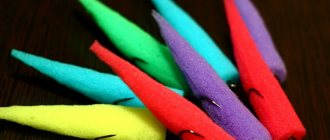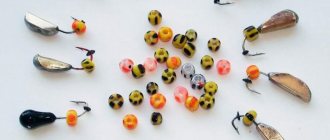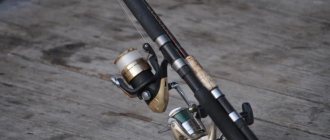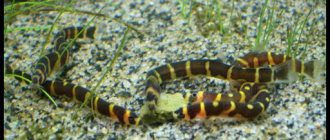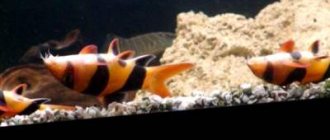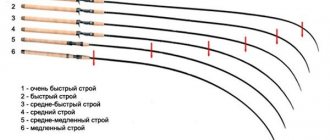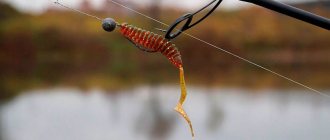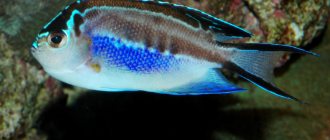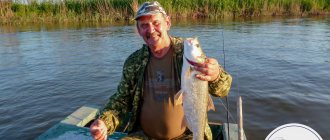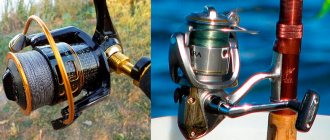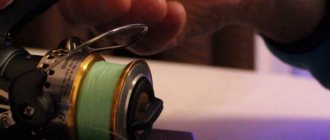What is foam bait?
She has a serious list of advantages, the main ones:
- Even an inexperienced user can make foam rubber baits with his own hands. They are cheap, unlike plumb lines, wobblers, spinners and other baits, which are more difficult to make at home.
- Elasticity allows the bait to play in the water, attracting the attention of predators. It guarantees that even with a lazy bite it will crumple and the fish will be hooked.
- The porous sponge is easily saturated with mixtures, which means you can paint it the desired color or sprinkle it with a flavor that will last a long time.
- Range. An experienced fisherman can easily throw the bait at a distance, further than a wobbler or spinner. Consequently, the likelihood of successful fishing increases significantly.
- Efficiency. Fish take a properly made bait equally willingly in spring and winter, in November and May, so it is not surprising that fishing with foam rubber is becoming common.
Which foam fish are suitable for fishing for perch?
The main parameters of foam rubber for fishing perch are the size and weight of the weight. As a rule, foam rubber 3-5 cm long and with a weight weighing 7-10 grams are used. During the current – up to 15 grams. These are the cute fish that spinning anglers use to catch large perch.
We see that these are homemade baits. The good thing about foam rubber is that you can make several dozen of them literally in one evening. Often spinning fishermen and other fishermen do not know what to do with themselves during the off-season. Here is a clear example of how you can spend your time usefully.
We see very regular fish. Let us first note the location of the hooks. They are pressed tightly to the body of the bait. It turns out to be a reliable non-snag. Such a fish will pass through vegetation and the number of hooks will be minimal. We know that perch often prefer places near vegetation, among water lilies and algae. Catching it in such areas can be problematic. The foam rubber overcomes various obstacles without any problems. Her ability to shrink and quickly return to her previous shape will be very useful.

In the image we see fish with notches. What are they needed for? The fact is that in water such fish show more active play. It turns out that each segment makes movements in turn and the body of the bait seems to consist of several parts. When the perch is active, it is enough to lower the bait to the horizon where the predator is, and the fish will immediately attract the attention of the school. All you have to do is move the tip of the rod a little, and the foam rubber will make intense movements.
Here is another type of foam rubber:
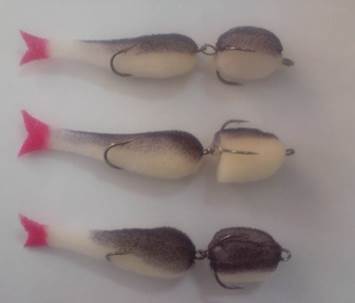
We see that these fish consist of two parts, which are connected to each other by rings from tees. A tee is attached to each half. No matter what part the perch attacks, it will still catch on the sting of the hook. Such models are very effective when fishing for perch in the summer, when it is active. It is good to fish with compound baits in standing waters. They show very active play and attract predators from afar.
The simplest type of foam rubber is carrots:
They are suitable for summer perch fishing. When he is actively hunting for fry, he will also take carrots. These are really catchy foam fish. They are suitable for bottom fishing, when small amplitude jerks are made with a spinning rod and the bait wriggles in the bottom layer and touches the bottom. It happens that schools of perch replace one another and predators actively grab everything that moves, including carrots. And it’s easy to do. It is enough to take foam rubber and cut 3-5 cm long blocks from it, just for the perch, and carefully cut off the edges to get blanks like those in the image. Then all that remains is to install tees or doubles with weights, and you can start fishing. With such simple baits you can catch a normal amount of perch in a good place from a boat within 2-3 hours.
A good place is when something like this happens at the bottom:
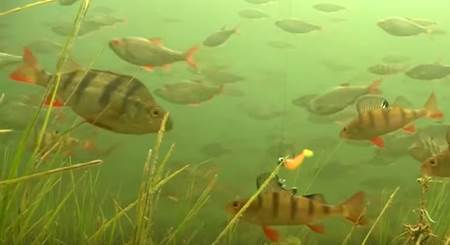
The bait is simply lowered from the boat into the bottom layer and small jerks with pauses are performed. The perch doesn’t look at the fish for long and immediately grabs it. Moreover, if there is a decent line of relatives behind him. Such a distribution cannot but please fishermen, and in this case not only foam fish, but also twisters and vibrotails will work well.
Returning to the varieties of foam fish for perch, here is another good option:
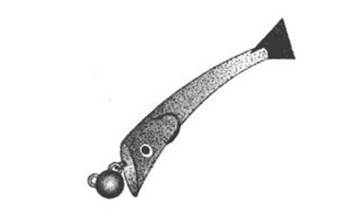
This fish has an oblique cut in the nose. Due to this body geometry, the bait makes active movements even during slow retrieves and pauses. The perch loves foam rubbers to move; it attacks them without hesitation. This model showed good results when fishing in thick water with jerks, pauses and when performing stepwise retrieves.
Many spinning anglers attach various bright elements to the fish. These can be red thick threads, silicone strips, various bows and small beads. Connect fish with silicone baits. Everyone shows their imagination and in the end we get such bright models:
The next successful bait for fishing perch is the octopus. It looks like this:
This is also homemade. It's very easy to do. It is enough to cut a long and wide strip of soft foam rubber and fold it in half. Next, a nylon thread is tied in the upper part, as shown in the figure, and then strips are cut out, and the result is something like an octopus. The tee is hidden among these flats and is almost invisible. Returning to the idea that an active perch attacks everything that moves, let’s say that he will take such a bait without question. It is best to catch an octopus in a plumb line. We just lower it to the bottom and wait for it to land.
Then we just make small jerks and wait. The perch takes at different times. He often attacks while landing, while flying, or while charging. You can slowly raise the bait or just hold it above the bottom for a while.
This octopus really stands out from the other items. When it goes down, stripes develop in the water. It turns out very beautiful and at the same time productive from the point of view of perch hunting. And again, making such an octopus is not a problem even when fishing. If you have foam rubber, scissors, threads and tees. Use tees or doubles for perch approximately the same (Nos. 8-10) as in this photo:
Regarding the color of the foam fish for perch, when it is active, it takes on any fish. In the second half of autumn, the perch already switches to moderate feeding and stands in deep areas. At this time, it is not reasonable to catch it with bright baits. It is better to use fish colored in gray tones and with black dots. The result will be something like a small bull, gudgeon or bleak. In general, it is better to fish with foam rubbers that look like fry. Here are some good options:
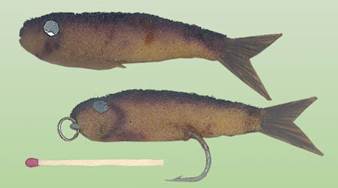
What foam is best to use for fish? For fishing perch, soft, medium- and fine-pored foam rubber is best suited. You can cut a tail, fins and stripes from it. All these elements, each individually, will wriggle in the water, make noticeable movements, play, in a word. For fishing perch, lures with active action are suitable so that they make different somersaults, tremble slightly, etc. Soft foam fish are capable of such play. Hard foam rubber produces baits with limited playing capabilities.
And one more important point when fishing for perch. Many fishermen have noticed that if the foam rubbers are given a fishy or bloody smell, the number of bites will noticeably increase. Predatory fish determine the presence of fry by smell, among other things. If you rub the foam rubber on the roach, it will become more natural and believable. Roach, by the way, has a very rich smell. After its capture, mucus with such a pronounced smell remains on the hands. If you rub the fish on the roach and fish with them, you can get very good results.
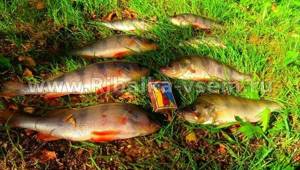
Foam spinners often take fish oil with them. It is diluted with water and a very suitable attractant is obtained. This liquid is poured into a small container and the bait is dipped in it. The results are very catchy foam fish. You can also dip it in diluted blood or make a paste of worms and bloodworms and dilute it in water. Such natural smells are very attractive to perch, especially in cold weather.
Should I buy a foam fish or make it myself?
This problem faces beginners, while masters prefer to make the bait themselves. This option has its advantages: you can give the product any shape, color and aroma. This is important - standard ones will not always be catchy on a particular body of water, and knowing the habits and preferences of the fish on the nearest lake, the expert will return with a catch.
To learn more:
The best wobblers for catching chub
On the other hand, the cost of this material is low. Of course, ready-made foam fish for pike-perch, pike or perch are inexpensive, but it’s worth considering that their service life is also short. Clinging to grass, small branches or snags, they will wear out, and once in the toothy mouth, they will lose their original appearance. Learning how to cut out crafts with your own hands is useful.
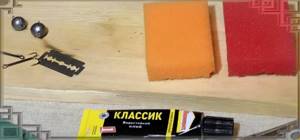
Technique for catching pike with foam fish
When catching pike and other predatory fish on foam rubber, use regular jig, uniform and jerking retrieves. It is necessary to use all the behavioral features of foam fish in water.
Foam rubbers have very good buoyancy. When they reach the bottom, they take a vertical position. And at this moment they very much resemble a feeding fry. Classic stepped wiring looks like this. First we look for a slope, but not a steep one, but a stepped one, something like this:
If we fish from a boat, we anchor above the bottom of the drop. We cast to the very top step and begin to slowly reel in. We set the weight so that it does not get carried away by the current, 7-10 grams per gram if we are fishing in a quiet section of the river. We wait until the fish falls to the next step and after a few seconds of pause we again make several turns of the reel. When the pike just stands and looks at the bait passing by, we increase the pauses. You can also tap the bait on the step. In general, we fish all the steps in this way and make repeated casts. First we use carrots. If the pike does not take them, then we use more advanced fish.
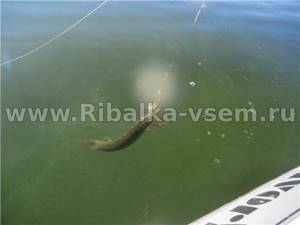
It can be difficult for a beginner to understand which slope in front of them is stepped or steep. To feel more confident in such situations, it is better to use an echo sounder. It will show a clear picture of the fishing spot, and the angler will have a clear understanding of exactly how to make a retrieve in a particular place, what size these steps are and how many turns of the reel can be made on each step.
If the fish is soft enough and has a flexible tail, then it is easy enough to move the Quitertype, and the fish will play very naturally. And if you use fish made of hard foam rubber, you will have to play along with the spinning rod more actively. You can move the bait when it reaches the bottom. This will create a cloudy cloud onto which the predator will swim. The result will be such a picture that the fry seems to be swarming at the bottom, and the insidious pike has swum to attack it.
Another good method for catching pike with a foam fish is as follows. We cast the bait into a deeper section of the river or lake and wait for it to sink to the bottom. Next, wait a few seconds and begin to slowly rotate the reel handle. If the bottom is flat, then the bait slowly drags along the bottom. After this, we sharply accelerate the wiring and make several revolutions. Next, pause for 2-3 seconds. We do such ragged wiring on a section 10-15 meters long.
You can simply drag slowly along the bottom so that the bait scratches the bottom and raises a cloud of turbidity. This tactic often brings success when the pike lives in the bottom layer and does not strive to climb to the “upper floors.”
The technique of catching pike with foam fish in the current is also effective. It consists in the following. The cast is made across the current or slightly higher. Let the fish take a working position so that it sinks to the bottom. The weight is selected in such a way that it is carried away by the current. While moving the bait, you can play along a little with the tip of the rod, and sometimes hold it. It is very important to choose a weight that will carry it, but only a little at a time, so that it does not fly as if from a mountain. It will be bad if the weight gets stuck in debris or snags. The bottom should be clean, preferably sandy or clayey.
A few words about jerks on uniform wiring. When you swing a rod, it is very important to determine the amplitude. You need to understand what horizon the pike is on at this time. How to determine where the fish is currently standing? It's very simple - use an echo sounder. It will show on what horizon the fish are concentrated.
For example, we established that the pike stands two meters from the surface of the water. Let the bait fall at a distance of 2 m. 40 cm, and after that we swing the tip of the rod. If the pike is standing a meter or two from the bottom, then we do not wait until the pike falls to the bottom, but stop its fall 40-50 cm and make sharp strokes of 0.5 - 1.5 meters.
In general, when a pike is active and stands in the water column, it takes a fast-moving bait, which comes off the bottom and soars high into the upper and middle layers of the horizon.

When pike is passive, it is customary to catch it with fish similar to fry that live in a given reservoir. Moreover, at different periods, pike gives preference to perch, roach, gudgeon and perch. In different bodies of water, its priorities may differ. Therefore, it is very useful to have fish that imitate roach, perch, dace, perch and other species. You can determine which fish is best for pike to take by experience or if you know the body of water well and the habits of this predator in it.
Experienced spinning anglers note that pike really like to hunt two-piece baits, which were mentioned earlier. We can say that you should have these fish without fail when you catch pike. The most important element of this foam fish for pike is the tail. It should move even during very long pauses. If you have made 5-7 trips of different types, but there are no bites, it means there is no pike there or it is in suspended animation.
Let's prepare a successful basis for further equipment
Whether you get a catch or waste your time depends on the correct execution. All work is done step by step:
- Take a suitable piece of foam: upholstery material, dishwashing sponge and any other. Experiment with different hardness and porosity. White foam rubber is better suited - it can be easily painted in any color and applied a complex pattern. But you can also take ready-made painted material.
- Cut out the blank - choose the shape yourself. Some will choose a bleak as a template - thin but tall; others prefer a gudgeon - almost round in cross-section. It makes sense to make several blanks in order to determine during fishing which one is more catchy. To cut at home, you will need scissors and a razor blade.
- Soak the foam rubber with water so that it springs less and is easier to process. Round the corners, give the head the appropriate shape, and make a cone-shaped tail.
- Cut the narrow part to create a place where the hook will be installed. If other hooks will be used, this step of the instructions can be skipped.
The base of the foam rubber bait for pike, perch, pike perch and other predators is ready. Let's look at different rigging methods so that each fisherman chooses the one that suits him.
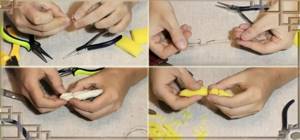
Soft fish on a jig head
Quite productive, and therefore a common type of bait. Of course, a jig is noticeably more expensive than a regular double or tee. But there is no need to rack your brains over the additional load, which will probably regularly cling to various obstacles, threatening to break. Take a jig hook, the shank of which is 3-4 cm less than the length of the base. Carefully pierce the foam from the front so that the sting sticks out from the “belly”. Make sure that the hook goes completely into the bait - only the weight should be visible.
To learn more:
Selecting tees for balancers: the best manufacturers
All that remains is to squeeze out a few drops of glue to securely fix the foam rubber to the weighting agent and let it harden. Now you know how to make a foam fish with your own hands, and you can always repeat the procedure, which means that every trip to a river or lake will bring rich fruits.
Foam fish with double and tee
Before you start making bait, it is advisable to cut out the tail fin - it will play, attracting additional attention from predators. After this, carefully, using a thick awl or thin scissors, make a hole from the “abdomen” to the “muzzle” of the homemade fish. Pass the base of the double or tee through this hole, and then connect the separate parts into a structure using glue.
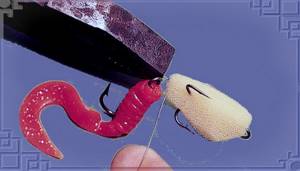
Some craftsmen, when making foam rubber for fishing with their own hands, decide to use not one hook, but two at once. It's just a little more complicated:
- A larger base will be needed; only a large pike or pike perch can swallow it. Cut it out of foam rubber of a suitable color and density.
- Make two holes in it - in the stomach and near the tail. They should come out in the area of the muzzle. Insert the hook into the first one and push it to the outlet hole. Solder a small piece of soft but strong wire to the other hook. You can use a metal leash. Pass the wire from the tail hole to the outlet hole.
- Moving the foam aside so as not to damage it, solder the second tip of the wire to the other hook and let the solder cool.
- A little glue to ensure high reliability.
The equipment is complete - you have received the tackle with which you will catch big fish. Surely she won't be able to spit out such bait.
Size of foam rubber fish without hooking
The size of the home-made non-hook foam fish is very arbitrary, but within reason.
If you prefer shore fishing with long-distance casting of bait when fishing, then the most suitable shape of a medium-sized foam fish both in still water and in the current will be streamlined, narrow, and slanted.
For a soft non-hooking bait, the average dimensions will be: 70-80 mm - length; 10-14 mm is the width of the body and 14-17 mm is the lateral height of the foam rubber.
It is not recommended to make the tail of a foam fish without hooking large; it should not extend beyond the body size when making soft bait (in height).
Some fishermen argue that the tail fin is not necessary as an element of a non-hooking foam rubber bait, but I believe that the tail is needed.
Repeated attempts have been made to identify the relationship between the size of foam fish and the size of juvenile fish, depending on the time of year. No clear answer has been received on this matter.
What is meant here is a comparison of the sizes of homemade foam rubber fish without hooks with the sizes of one-year and two-year-old juvenile live bait fish used for filling the girders.
Foam rubber plus twister
Another bold but effective solution. Production will be more expensive, but the likelihood of a bite with each trip will increase. The fact is that foam rubber is a soft, easily torn material; it will not be possible to make a large tail from it that would oscillate in the water. A twister will help you make a catch fish with your own hands. In this case, the base should be made short and thick - without a tail. Thread a tee or double into it using the method described above.
To learn more:
Mini-review of baits from Bait
Non-snacking foam material
There is a considerable selection of materials for making non-snappy foam rubber fish. Brands of foam rubber differ in density, porosity, viscosity, elasticity and other parameters.
Foam rubber can be found in large, medium and fine porous, soft or elastic. At its core, the artificially created material of any foam fish consists of air vascular cells connected to each other by the thinnest walls.
The problem is what kind of foam rubber to choose for making a non-snacking foam rubber.
I don’t think that the porosity, as well as the color of the foam rubber, has a decisive impact on the effectiveness of catching predatory fish with non-hooking bait, but it does affect the ease of processing the foam rubber when making the bait.
Fine-pored foam material is best processed. Such foam rubber is better and lighter and can be painted in different colors with different dyes.
Probably the only and most important thing you need to pay attention to when choosing a material for making a non-hook fish is the limitation period for making foam rubber.
Under the influence of external factors, foam rubber sheets have the unpleasant property of decomposing quite quickly, becoming loose and fragile.
After choosing the appropriate material for making a foam rubber fish, you should think about the shape of the foam rubber that is most rational for hook-free bait.
Impregnation with attractants is an important point
As mentioned above, one of the main advantages of foam rubber baits is the possibility of using special flavors. This important advantage should not be neglected. You can purchase attractants at any fishing store. The porous material absorbs these substances and retains the aroma. This is especially true in muddy water - fish can track the bait by smell, and not just by swimming close enough to see it or feel it through touch.
But you shouldn’t get too carried away - one drop of attractant is enough for the foam base to retain a noticeable odor for a long time. An overdose may result in the scent repelling prey.
